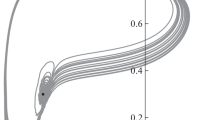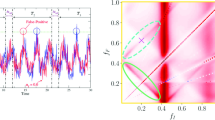Abstract.
The frequency sensitivity of weak periodic signal detection has been studied via numerical simulations for both a single neuron and a neuronal network. The dependence of the critical amplitude of the signal upon its frequency and a resonance between the intrinsic oscillations of a neuron and the signal could account for the frequency sensitivity. In the presence of both a subthreshold periodic signal and noise, the signal-to-noise ratio (SNR) of the output of either a single neuron or a neuronal network present the typical characteristics of stochastic resonance. In particular, there exists a frequency-sensitive range of 30–100 Hz, and for signals with frequencies within this range the SNRs have large values. This implies that the system under consideration (a single neuron or a neuronal network) is more sensitive to the detection of periodic signals, and the frequency sensitivity may be of a functional significance to signal processing.
Similar content being viewed by others
Author information
Authors and Affiliations
Additional information
Received: 26 October 1999 / Accepted in revised form: 25 July 2000
Rights and permissions
About this article
Cite this article
Yu, Y., Liu, F. & Wang, W. Frequency sensitivity in Hodgkin–Huxley systems. Biol Cybern 84, 227–235 (2001). https://doi.org/10.1007/s004220000203
Issue Date:
DOI: https://doi.org/10.1007/s004220000203




